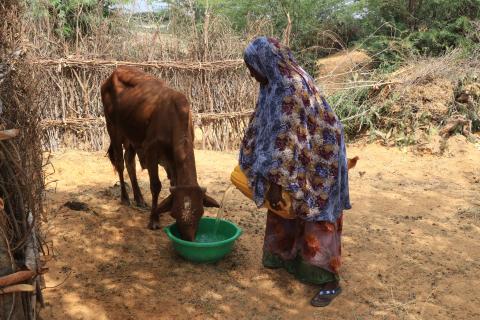Seasonality in the African drylands: 15 years of evidence
This is a summary of the following paper: Venkat A, Marshak A, Young H et al. (2023) Seasonality of acute malnutrition in African drylands: Evidence from 15 years of SMART surveys. Food and Nutrition Bulletin, 44, 2, S94–S108. https://journals.sagepub.com/doi/full/10.1177/03795721231178344
Seasonal peaks in wasting prevalence and incidence are important considerations for nutrition programming, including humanitarian food aid interventions. However, implementers often categorise (and approximate) such data into simplified binary categories such as preharvest/postharvest or dry/wet seasons, which presents limitations. This study uses 15 years of Standardised Monitoring and Assessment of Relief and Transition (SMART) survey data (2000–2015), from 412,370 observations across 19 African dryland countries, to model peaks of wasting prevalence more accurately in continuous time across the year.
A thorough data cleaning approach was taken to increase data accuracy and study validity, including removing internally displaced person or refugee camp settings (which may have artificially inflated measures), ensuring overlaps of geographic areas between surveys, and excluding likely erroneous anthropometric measures. This thorough data cleaning, as well as the detailed breakdown of the methods provided, increase our confidence in the study findings. A detailed breakdown of the methods used is beyond the scope of this summary but can be found in the original paper.
There was a greater proportion of observations from Sudan (19.6%), South Sudan (17.8%), Nigeria (13.6%), and Chad (13.2%) compared to other countries, which should be considered when interpreting these findings. The authors also caution that the limitations of SMART survey methodology restrict this analysis to interpreting the variability of wasting patterns rather than the magnitude of wasting in these settings.
The findings indicate that there are 2 distinct peaks of wasting during the calendar year in the African drylands. Contrary to common opinion, the results suggest that a primary wasting peak is observed between April and May (in line with peak temperature) rather than the preharvest season in August to September. A secondary peak (September to October) then occurs in line with primary rainfall, Normalised Difference Vegetation Index (NVDI)1 (vegetation coverage), and a secondary temperature peak. However, less than 15% of SMART surveys were implemented in April to May – highlighting a significant data gap. The relative absence of data may reflect the bias that comes with aggregating data into broad seasons, which in turn can impact survey design and/or timing.
“Greater focus on the secondary wasting peak in September to October has led to a ‘blind spot’ for the primary peak of wasting in April to May, which should be the period of greatest concern”.
It should be noted that these findings are specific to the drylands in question. Indeed, the authors flag that wasting peaks are geographically specific and are impacted by a complex blend of human and environmental interactions – which in turn are becoming more variable with changing climates. Yet, more broadly, these results showcase the importance of analysing seasonality using the time of year as a continuous variable, rather than divided into discrete seasons, to capture the true annual variability of wasting. Qualitative data can also be used to increase data quality by illuminating how changing weather patterns affect food production systems, which in turn drive wasting.


